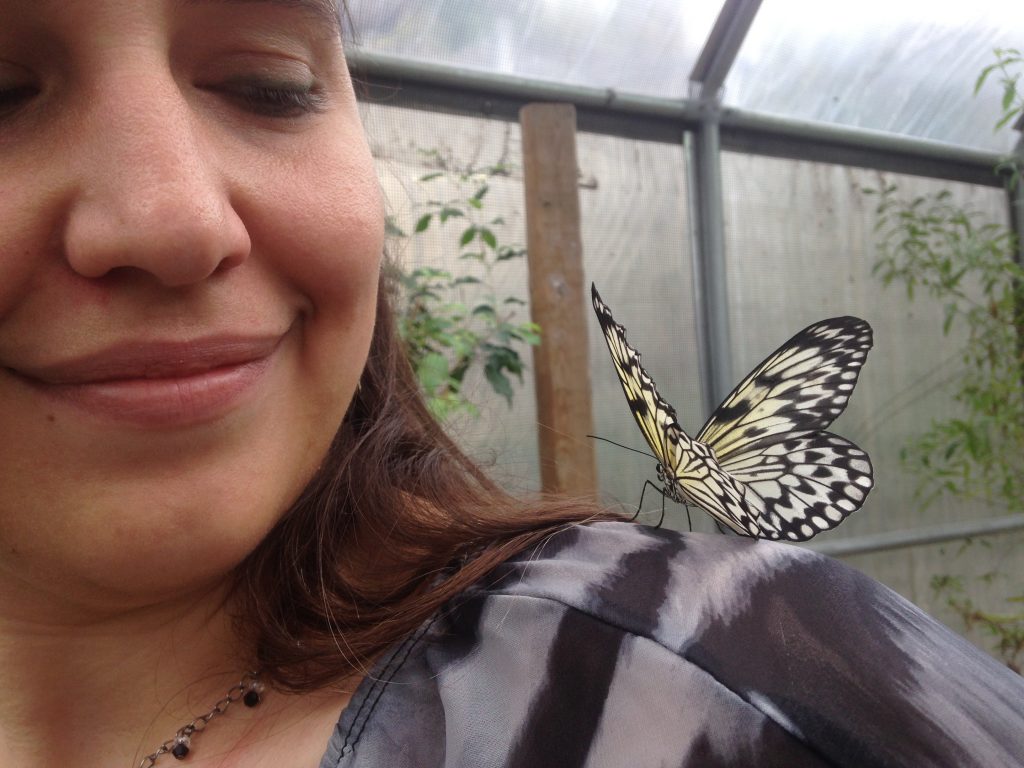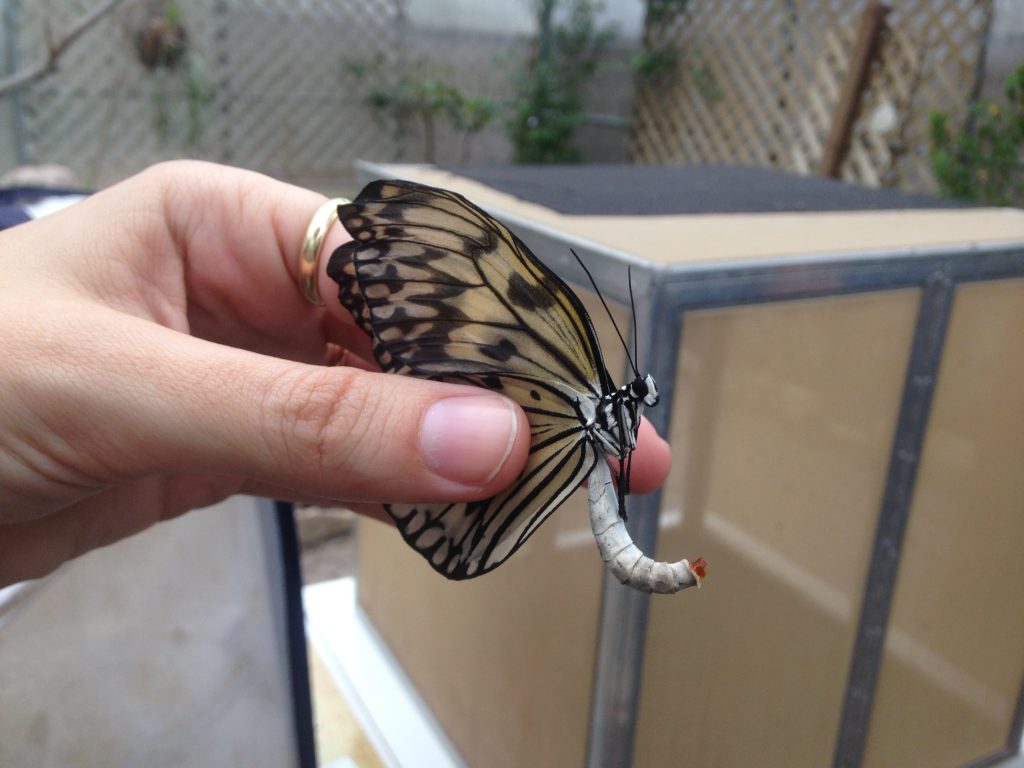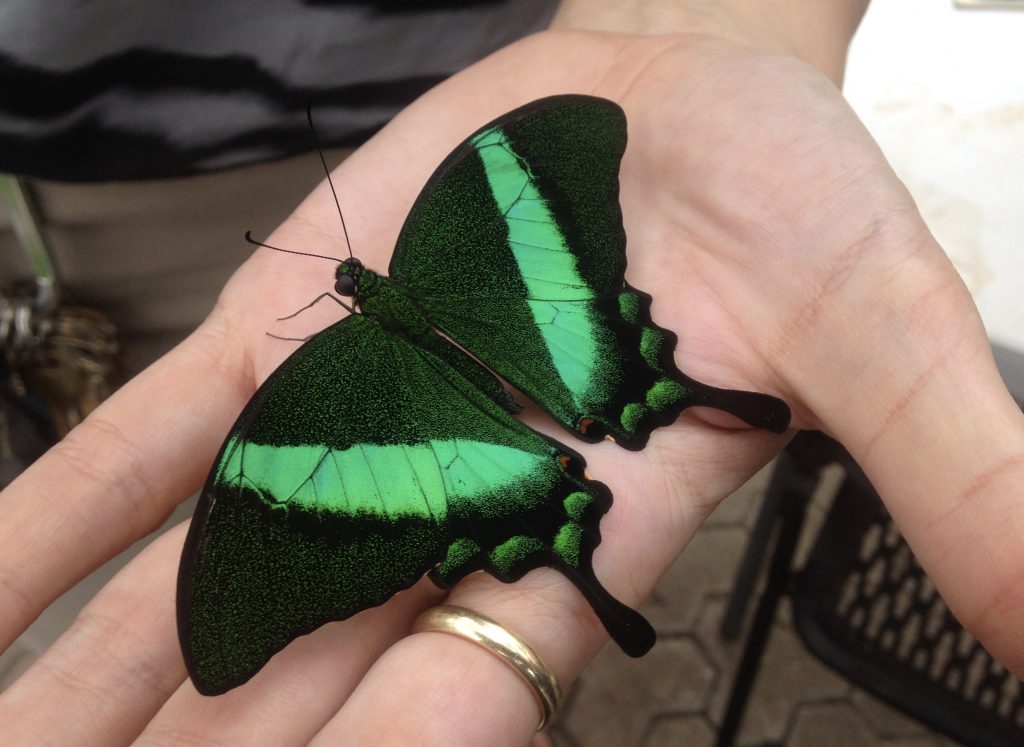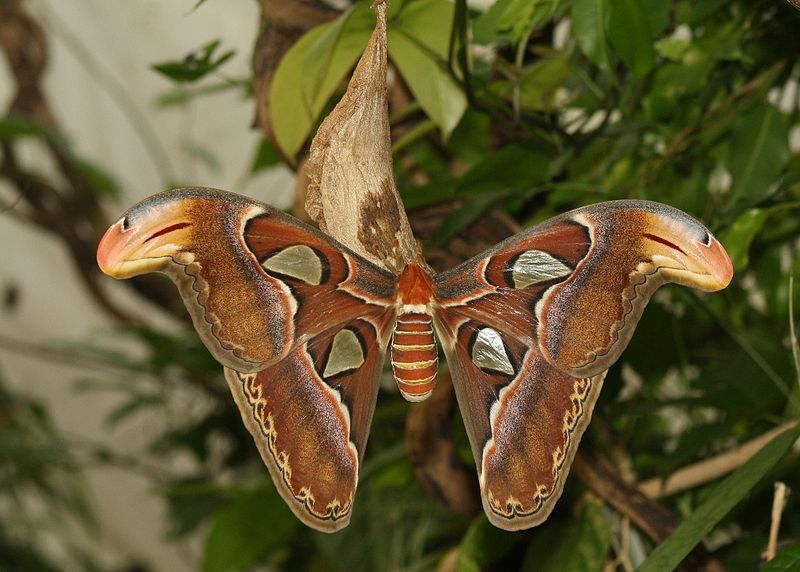Area butterfly buffs will have a unique opportunity to see exotic butterflies up close and personal while learning about the Monarch butterfly migration at the San Antonio Zoo’s

Hello, beautiful! Laurie Brown welcomes a Paper Kite butterfly to the San Antonio Zoo flight house for the Monarch Fest next week. Photo by Monika Maeckle
first Monarch Fest March 4 – 6. The inaugural event celebrates San Antonio’s recent national status as the first and only Monarch Champion City, so designated by the National Wildlife Federation’s Mayor’s Monarch Pledge program.
 Laurie Brown, Zoo volunteer services manager, along with Zoo staff and volunteers, have been preparing for the event for months. On the agenda for the 72-hour celebration: a native plant sale and seed giveaway, kid-friendly crafts and educational activities, and booths/displays by more than a dozen local pollinator advocacy organizations. The event is free with zoo admission.
Laurie Brown, Zoo volunteer services manager, along with Zoo staff and volunteers, have been preparing for the event for months. On the agenda for the 72-hour celebration: a native plant sale and seed giveaway, kid-friendly crafts and educational activities, and booths/displays by more than a dozen local pollinator advocacy organizations. The event is free with zoo admission. 
But for an extra $1.50, visitors can also stroll through the Zoo’s butterfly house, an experience well worth the cost. Proceeds go 100% to conservation and education efforts, says Brown.
Inside the flight house, hundreds of exotic flyers like the Malabar Tree nymph, Idea malabarica, also known as the Paper Kite, will be on display in a natural, garden like setting. The wings of this gorgeous black-and-white butterfly, native to India and Southeast Asia, resemble rice paper with a Monarch-like painted glass pattern.
Interestingly, the Paper Kite’s host plant, Apocynaceae, belongs to the same plant family as the Monarch butterfly’s host plant–Asclepias (milkweeds). Both are members of the dogbane family. Is it a coincidence that the lovely wing pattern on these two butterflies from opposite sides of the world are similar?

Excitable boy. Brown says Paper Kite butterflies are “sassy” and often land on visitors. Photo by Monika Maeckle
Not really, says Brown. The Paper Kite and Monarch are distant relatives.
Also scheduled for appearances in the flight house: the Common banded Peacock, Papilio crino, sometimes called a Buddhist Heart, sports fluorescent wings can suggest blue or green, depending on the angle from which it is viewed.

The wings of the Common banded peacock can hint green or blue, depending on the light reflecting on them. Photo by Monika Maeckle
Brown promises a couple dozen other exotics, a mix of local butterflies and a handful of amazing Atlas Moths, Atacus atlas, one of the most dramatic looking Lepidoptera. If you’ve never seen one of these impressive moths up close, you’re in for a treat.

The San Antonio Zoo will offer a chance to see the Atlas moth up close at Monarch Fest next week. Photo via Wikipedia Dr. Raju Kasamb
These Saturnid moths rank as one of the 10 largest insects in the world and hail from Southeast Asia. Their wingspans can reach 12 inches and in Taiwan, empty Atlas moth cocoons, spun from sturdy Fagara silk, are used as purses.
“Some vacated cocoons don’t need to be deconstructed—they can be used ‘as found’ as small pocket-change purses by simply installing a zipper,” according to the educational magazine Mental Floss.
Hmm. New handbag trend?
Advance tickets are available online or you can buy them upon arrival. Hope to see you there!
Related posts:
- Mayor’s Monarch Pledge NOT “just talk,” will change how we manage land
- How to plan your butterfly and pollinator garden
- Guidance on milkweed management confuses butterfly gardeners
- Mostly native urban butterfly garden outperforms grass every time
- Tropical Milkweed: To Plant it or Not is No Simple Question
- $300K grant awarded to UTSA to inventory Texas milkweeds
- Endangered Species Act: wrong tool for monarch butterfly conservation?
- How to raise Monarch butterflies at home, Part 1
Like what you’re reading? Don’t miss a single post from the Texas Butterfly Ranch. Sign up for email delivery, like us on Facebook, or follow us on Twitter, @monikam.

Leave A Comment